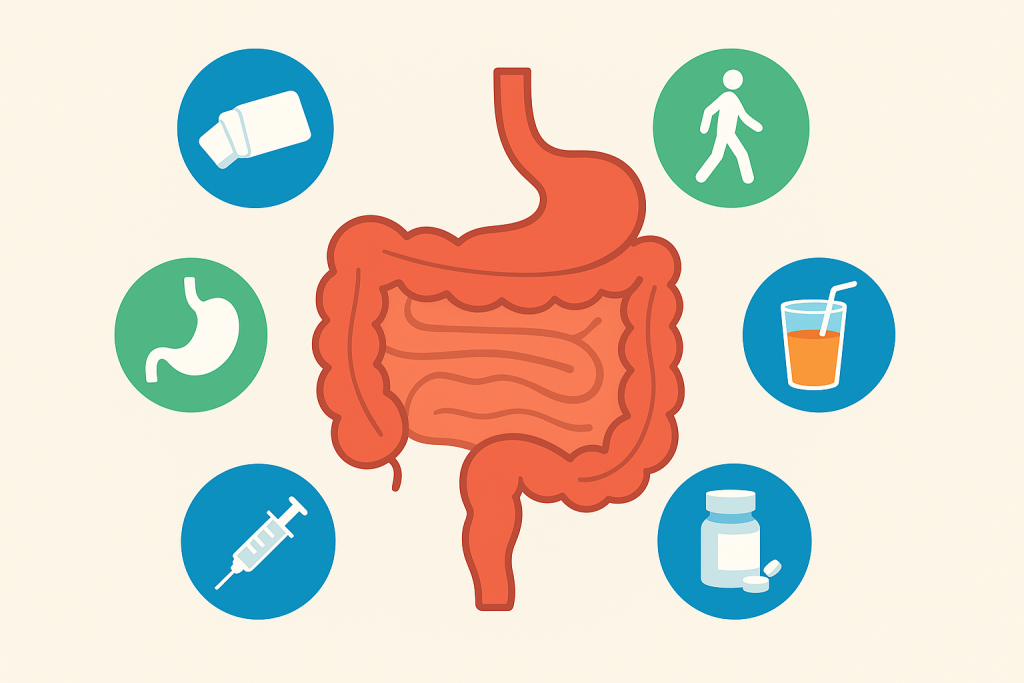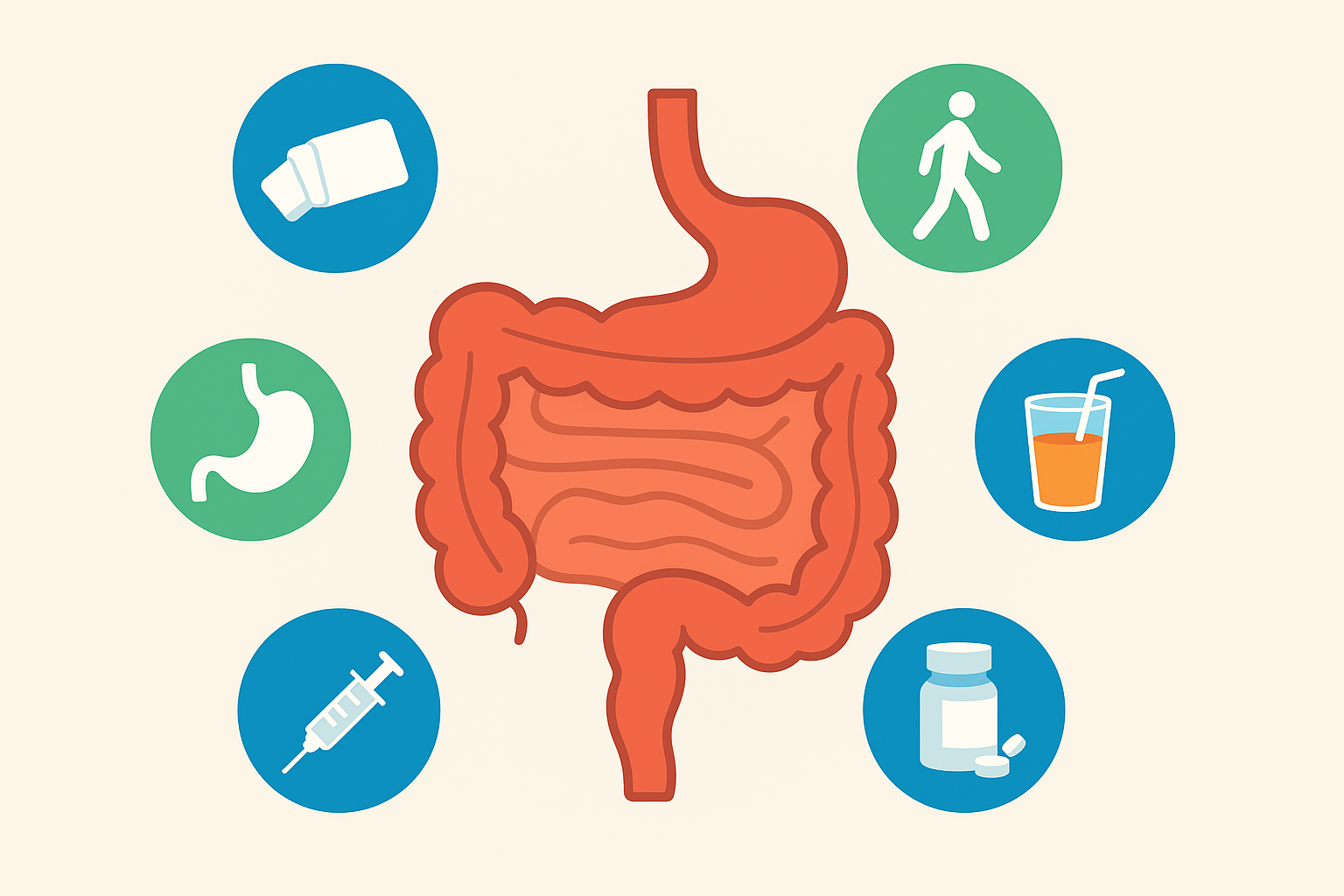Practical, evidence-based strategies to shorten ileus and length of stay

Every surgeon has lived this story. The operation is clean. The dissection elegant. The anastomosis airtight. Your patient looks stable, lines are out, and pain is well controlled. You’re ready to sign discharge orders—except their abdomen is still distended, and they haven’t passed gas.
It doesn’t matter how perfectly you operated. Until the gut wakes up, your patient isn’t leaving.
Ileus is a great humbler. And it’s not brute force that solves it—it’s a handful of subtle nudges, delivered consistently. Enhanced recovery pathways (ERPs) have taught us a lot, but they’ve also exposed a truth: only a few interventions actually change outcomes, and many of the tricks we once believed in don’t hold up to scrutiny.
Here’s what the evidence says—and what it looks like on the ward.
Lesson 1: Sometimes, It’s the Smallest Stimuli That Work (Chewing Gum)
I once had a patient who swore the only thing that got her bowels moving after surgery was chewing gum. At the time, I smiled politely. Now, the data back her up.
Chewing gum—so-called “sham feeding”—is recommended by ASCRS and SAGES as a safe, low-cost tool [1,2]. The mechanism is simple: gum activates the vagus nerve, increasing saliva and jump-starting the cephalic phase of digestion.
The numbers aren’t flashy, but they’re real: 8–16 hours faster to first flatus, 16–23 hours faster to bowel movement, and up to a day shorter in hospital [3,4]. The effect is strongest in patients after colorectal surgery, especially those outside a full ERP. Within ERPs, the gains shrink but don’t disappear [3].
The take-home: Hand out gum the way you hand out painkillers. It’s not glamorous, but it works.
Lesson 2: The Bed Is the Enemy (Early Mobilization)
We underestimate how much time patients spend lying still after surgery. And every hour they spend in bed is an hour their gut spends asleep.
Mobilization isn’t just about walking laps—it’s about physiology. Movement prevents muscle loss, improves pulmonary function, and indirectly stimulates peristalsis.
The evidence is lower quality but consistent: shorter length of stay, fewer complications, and at least a suggestion of faster gut recovery [1,2]. And here’s the best part: it benefits everyone—open or laparoscopic, frail or fit.
The take-home: The sooner your patient is out of bed, the sooner their gut will follow.
Lesson 3: Stop Waiting for Bowel Sounds (Early Oral Feeding)
I still remember being taught to wait for bowel sounds before feeding. Looking back, it was superstition disguised as science.
The evidence now is clear: early oral feeding—within 24 hours of surgery—leads to faster return of bowel function, fewer complications, and shorter length of stay [1,2]. And no, it doesn’t increase leak rates, aspiration, or mortality.
This is especially true for elective colorectal surgery, both open and minimally invasive.
The take-home: The gut wakes up when you give it something to do. Waiting for bowel sounds is a ritual we should abandon.
Lesson 4: The Right Drug, in the Right Patient (Prokinetics & Opioid Antagonists)
This is where nuance matters.
Prokinetics like metoclopramide, erythromycin, and serotonin agonists do help—network meta-analyses show they shorten time to bowel movement without raising complication rates [5,6]. But each carries its baggage: extrapyramidal symptoms with metoclopramide, QT prolongation with erythromycin, and arrhythmias with serotonin agonists [7].
Opioid antagonists, particularly alvimopan, are the game-changer. By selectively blocking peripheral μ-opioid receptors, alvimopan accelerates GI recovery without undermining pain control. It’s specifically recommended for open colorectal surgery, where studies show reductions in ileus, time to stool, and hospital stay [1,2,5]. Side effects are mild—bloating, flatulence—and serious complications are rare [3].
But know the boundaries: alvimopan is contraindicated in patients on chronic opioids (>7 days pre-op), those with complete obstruction, or severe renal/hepatic impairment [1-3].
The take-home: For open colorectal surgery, alvimopan is worth it. Prokinetics can help, but choose carefully based on comorbidities.
Lesson 5: Save the Contrast for the Stubborn Cases (Gastrografin)
Every surgeon has ordered Gastrografin as a last-ditch maneuver for a sluggish gut. But the evidence says it should stay that way—last ditch.
Trials show it may help in prolonged ileus, particularly by speeding tolerance of oral diet and passage of stool [7,8]. But it doesn’t reliably shorten overall ileus duration or length of stay.
Best candidates: Patients with prolonged ileus marked by abdominal distension and delayed stool, especially after colorectal surgery.
The take-home: Don’t reach for it routinely. Save it for the stubborn cases.
Lesson 6: Don’t Chase Fads (Coffee, Acupuncture, Nerve Stimulation)
I’ve seen colleagues swear by coffee, patients swear by acupuncture, and physiotherapists swear by nerve stimulation. The evidence? Inconsistent at best.
Umbrella reviews and meta-analyses show small, variable effects [4,9-11]. Some benefit may exist, but these aren’t reliable tools.
The take-home: If patients want their morning coffee, let them. But don’t prescribe it as therapy.
The Surgeon’s Playbook
If you cut through the noise, here’s the real short list:
- Always: Early mobilization + early oral feeding.
- Often: Chewing gum (especially if no ERP).
- Selectively: Alvimopan for open colorectal surgery; prokinetics for stubborn ileus; Gastrografin for prolonged ileus.
- Rarely: Coffee, acupuncture, nerve stimulation—adjuncts, not anchors.
The real challenge isn’t knowledge—it’s consistency. Mobilization requires a committed ward team. Feeding means abandoning outdated rituals. Gum only works if patients actually chew it three times a day.
The gut is stubborn. It doesn’t care that your sutures are perfect. But it does respond to nudges—small, consistent, disciplined nudges.
Final Thought
Surgery often celebrates the technical: the flawless dissection, the elegant anastomosis. But recovery? Recovery belongs to the mundane.
The bowels don’t win you applause in the operating room. But they determine how quickly your patient gets home. And as the evidence shows, sometimes the fastest way to discharge isn’t a scalpel—it’s a stick of gum, a walk around the ward, and dinner on the tray the same night.
References:
[1] Irani JL, Hedrick TL, Miller TE, et al. Surgical Endoscopy. 2023;37(1):5-30.
[2] Irani JL, Hedrick TL, Miller TE, et al. Dis Colon Rectum. 2023;66(1):15-40.
[3] Roslan F, Kushairi A, et al. J Gastrointest Surg. 2020;24(11):2643-53.
[4] Zheng L, Zhang X, et al. Int J Colorectal Dis. 2025;40(1):176.
[5] Buscail E, Planchamp T, et al. Br J Clin Pharmacol. 2024;90(1):107-26.
[6] Gosavi R, Dudi-Venkata NN, et al. Int J Colorectal Dis. 2025;40(1):131.
[7] Vather R, Josephson R, et al. Ann Surg. 2015;262(1):23-30.
[8] Milne TGE, Vather R, et al. ANZ J Surg. 2018.
[9] Emile SH, Horesh N, et al. Surgery. 2024;175(2):280-8.
[10] Sarmiento-Altamirano D, Arce-Jara D, et al. J Gastrointest Surg. 2025;29(3):101960.
[11] Sinz S, Warschkow R, et al. J Gastrointest Surg. 2023;27(8):1730-45.

